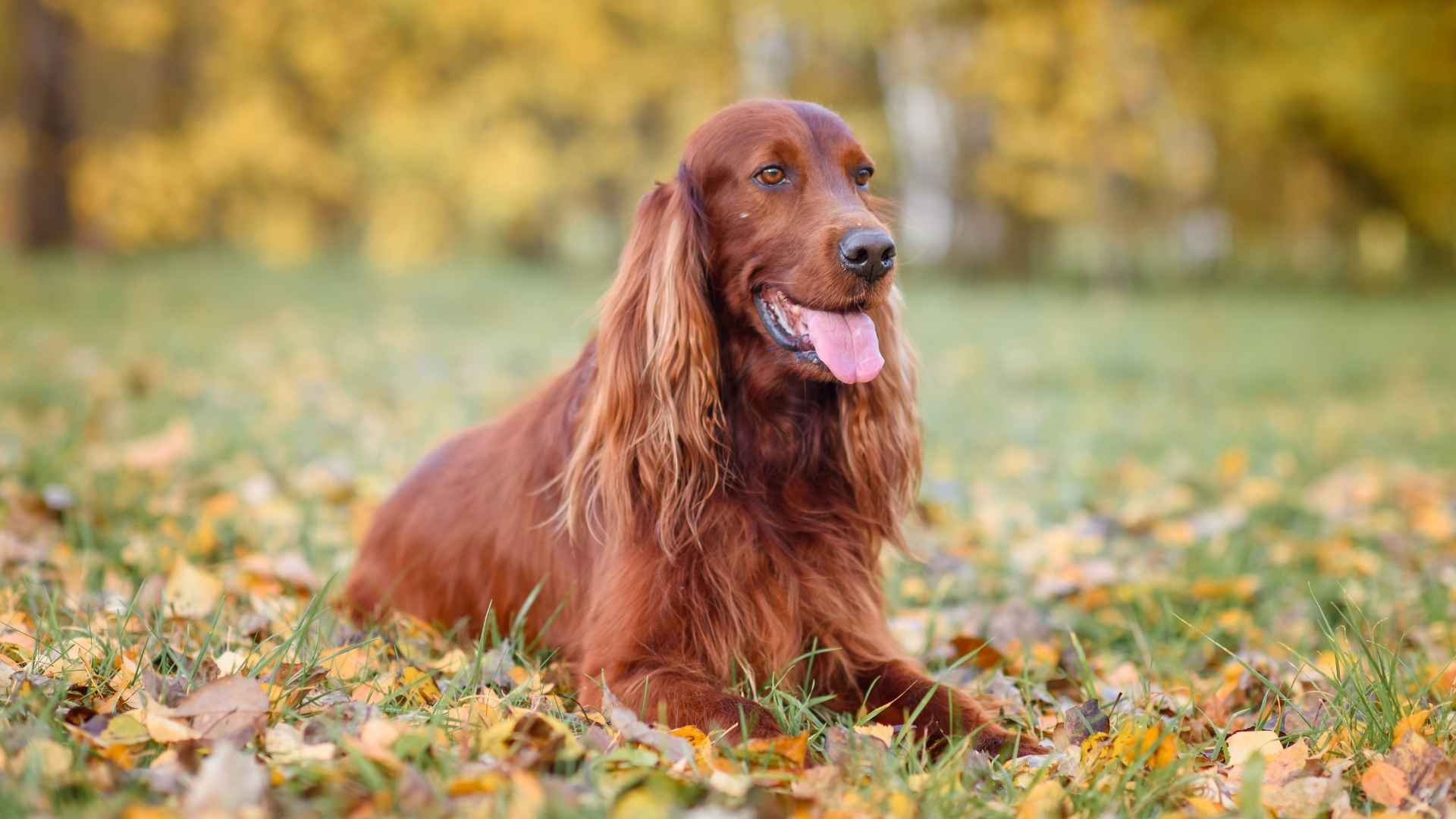For many dog lovers, barking can be one of the few downsides of sharing life with a furry friend. Whether you live in a bustling apartment complex, have sound-sensitive neighbors, or simply enjoy a peaceful environment, finding a dog that doesn’t vocalize excessively can be a game-changer. While barking is a natural form of communication for all dogs, some breeds are noticeably less vocal than others, making them a better match for quieter households.
Choosing a less vocal breed can reduce stress for both the pet and the owner. Unlike working or herding breeds bred to bark on the job, the least vocal dog breeds typically have calmer temperaments and lower reactivity to everyday stimuli like passing cars or doorbells. But even these mellow pups may bark occasionally—training, socialization, and regular activity still play a vital role in minimizing nuisance barking.
In this article, we’ll highlight dog breeds known for their quiet nature. From gentle giants to discreet lapdogs, these companions are perfect for those who prefer a peaceful barkscape.
Least Vocal Dog Breeds
1. Scottish Deerhound
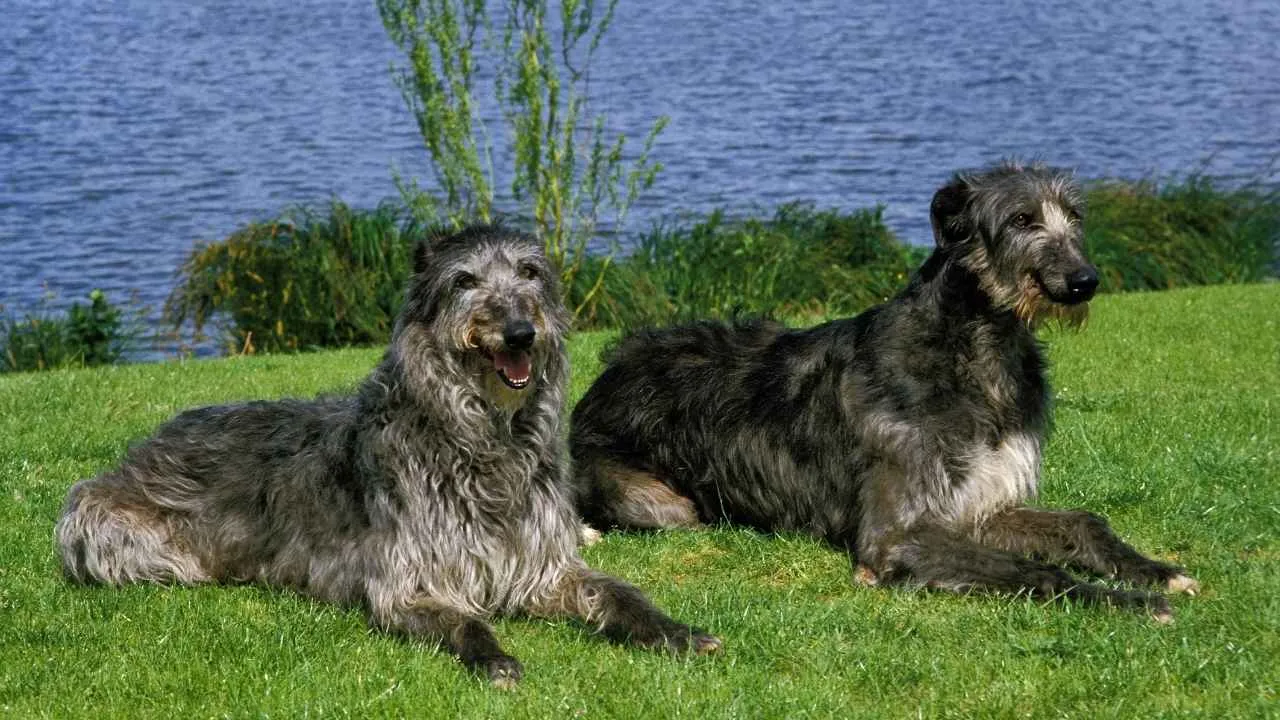
The Scottish Deerhound, known as the “Royal Dog of Scotland,” is among the tallest of canine breeds, standing 30 to 32 inches for males and weighing up to 110 pounds. Females are slightly smaller but equally elegant. According to the AKC, the Scottish Deerhound is known for being dignified and polite.
Bred for coursing red deer across the rugged Scottish Highlands, this breed is a majestic relative of the Greyhound, sharing its streamlined build but adorned with a coarse, wiry coat in shades of gray, brindle, or fawn.
With a dignified gaze, long neck, and tapered head, the Deerhound embodies grace and quiet nobility. It belongs to the Hound Group and typically enjoys a lifespan of 8 to 11 years.
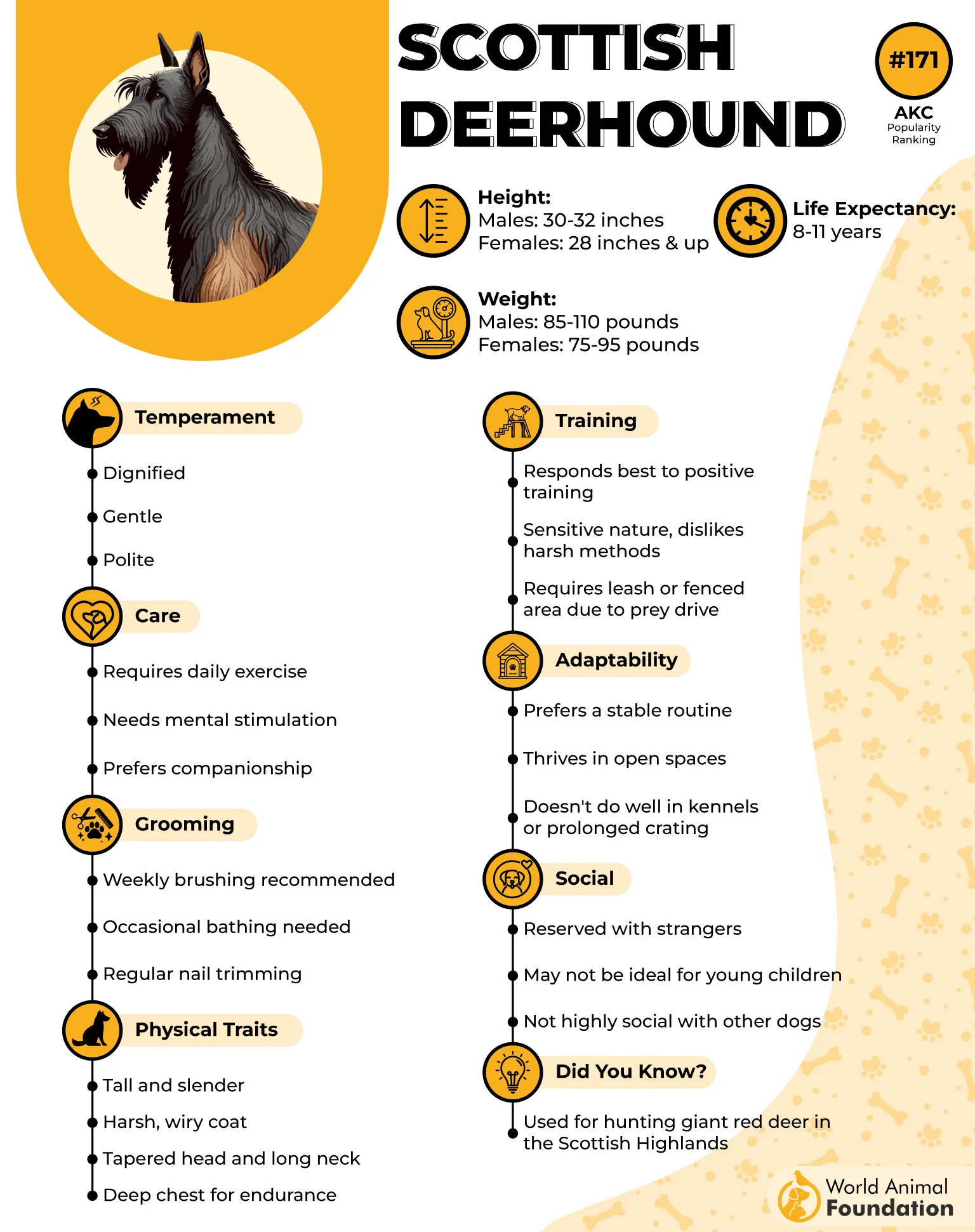
Ideal Owner
Scottish Deerhounds thrive in homes where they are given room to roam and a peaceful atmosphere to match their gentle temperament. Ideal for patient, experienced dog owners who understand sighthound behavior, they do best with access to secure outdoor space due to their strong prey drive.
These calm, laid-back dogs prefer quiet companionship and are well-suited to individuals or families who appreciate their non-vocal, regal demeanor.
Fact: The Scottish Deerhound rarely barks, earning it a one-out-of-five rating for vocal tendencies by DogTime.
2. Shiba Inu
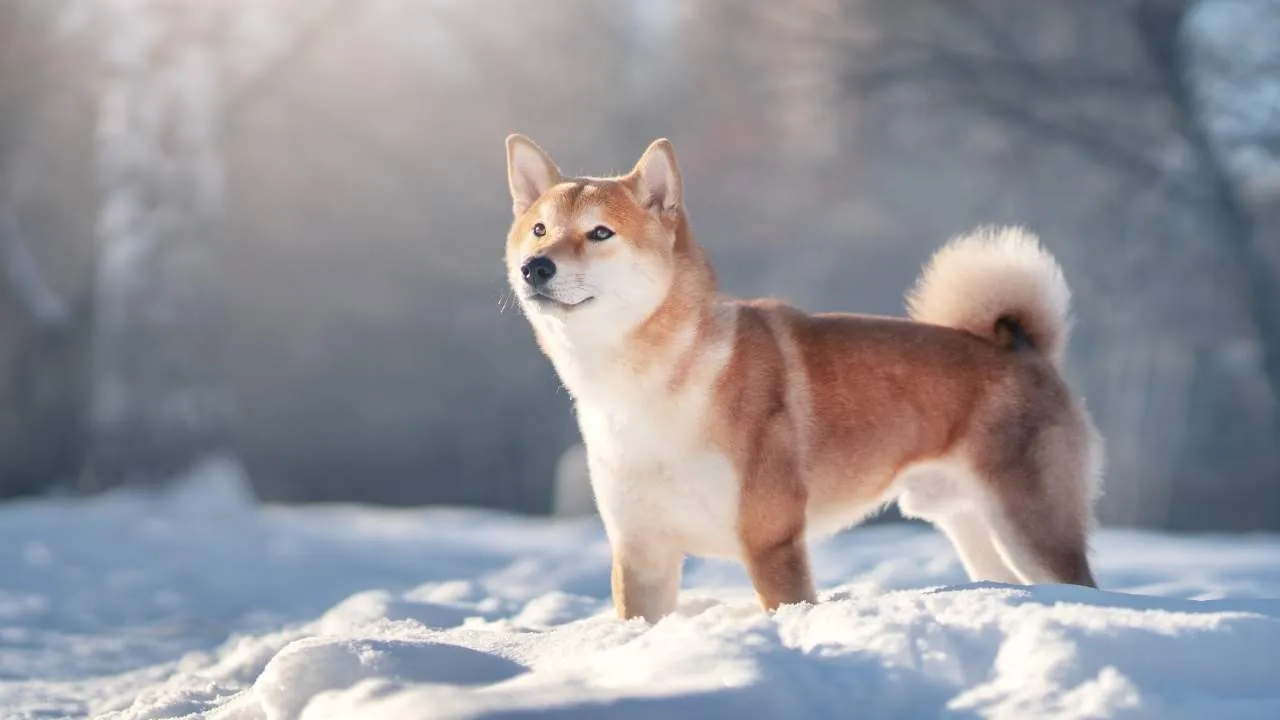
Known as Japan’s most beloved companion dog, the Shiba Inu is a spirited breed that balances independence with affection. According to PetMD, Shiba Inus are described as being small in stature with a solid and compact build.
With origins tracing back to 300 B.C.E., these agile hunters once scouted brushwood forests in the Chūbu region, tracking small game and birds. As the smallest member of the Spitz family, Shibas stand between 13.5 to 16.5 inches tall and weigh 17 to 23 pounds. Their thick double coat, which may be sesame, red, black and tan, or cream, gives them a fox-like elegance.
Despite their expressive eyes and alert posture, they are famously quiet, often choosing silence over barking—save for the occasional “Shiba scream” when startled or displeased. This dignified demeanor aligns with their classification in the Non-Sporting Group. Shiba Inus generally live between 13 to 16 years and require minimal grooming compared to many double-coated breeds.
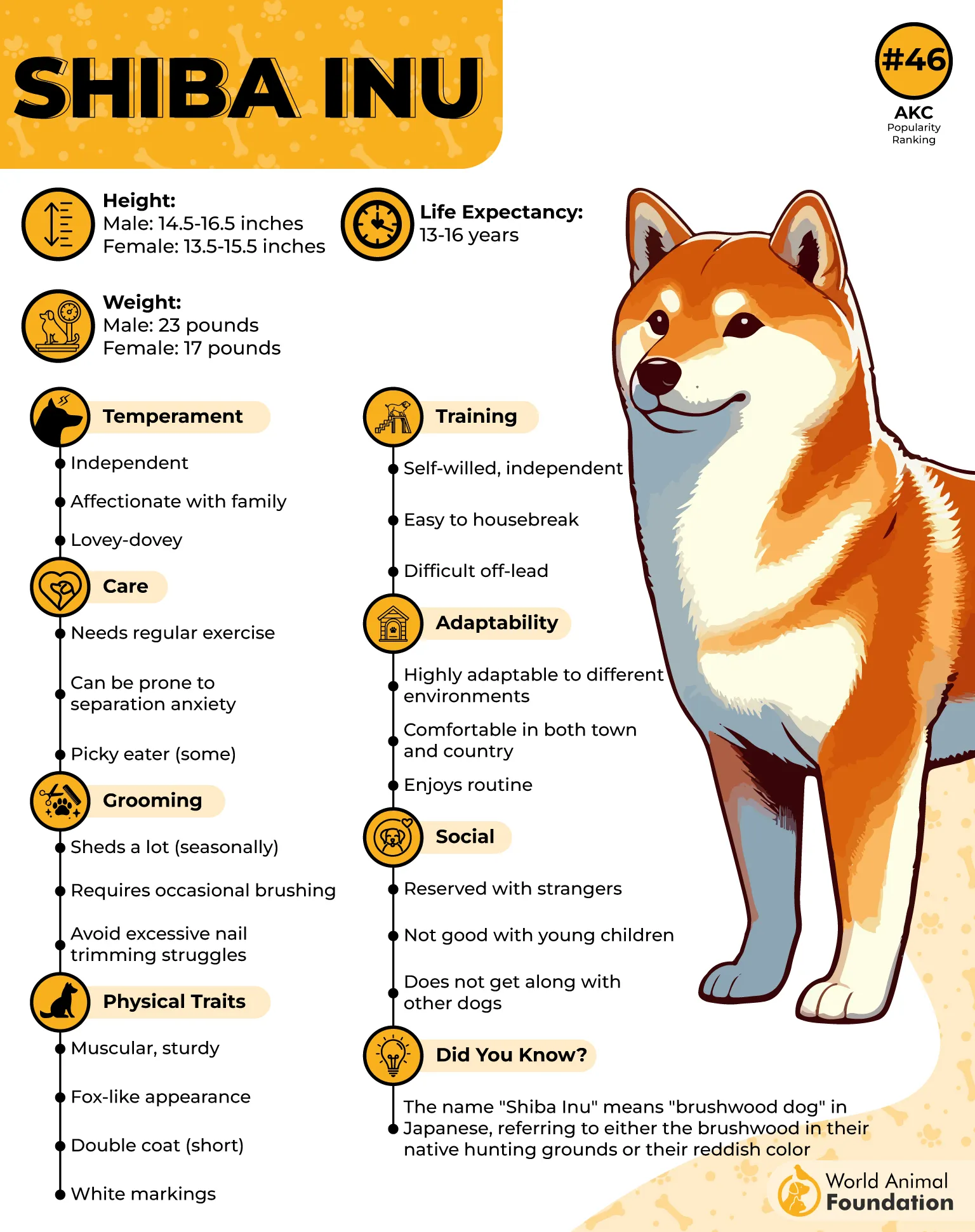
Ideal Owner
Ideal for confident and experienced pet parents, Shiba Inus do best with owners who appreciate their independence but can provide firm, consistent training.
Their stoic yet loyal nature makes them wonderful for calm households, but they may be aloof with strangers. While reserved, they bond deeply with their family and prefer a predictable, well-structured environment.
Fun Fact: The name “Shiba” comes from the brushwood bushes they once hunted in, while “Inu” means dog in Japanese.
3. Irish Setter
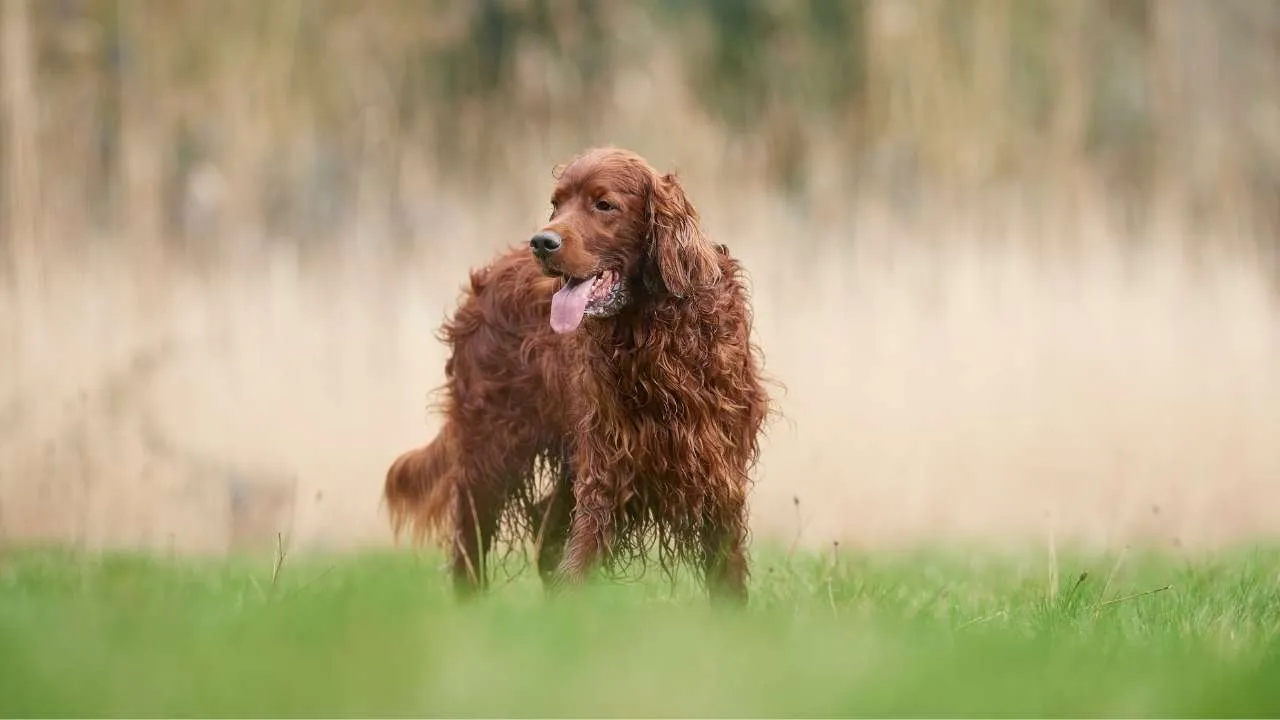
The Irish Setter, also known as the Red Setter, is a spirited gundog celebrated for its striking mahogany coat and graceful build. Developed in Ireland over two centuries ago, this breed was originally bred to locate game birds and signal their presence by “setting” low to the ground.
Measuring 25 to 27 inches tall and weighing between 40 to 70 pounds, Irish Setters are athletic, with long, feathered ears and tails that enhance their elegant appearance. WebMD describes the Irish Setter as one of the most stunning dog breeds, recognized for its sleek, mahogany-colored coat.
Despite their exuberant energy, they are among the least vocal breeds, typically only barking to alert or during high excitement. They belong to the Sporting Group and have a lifespan of 12 to 15 years.
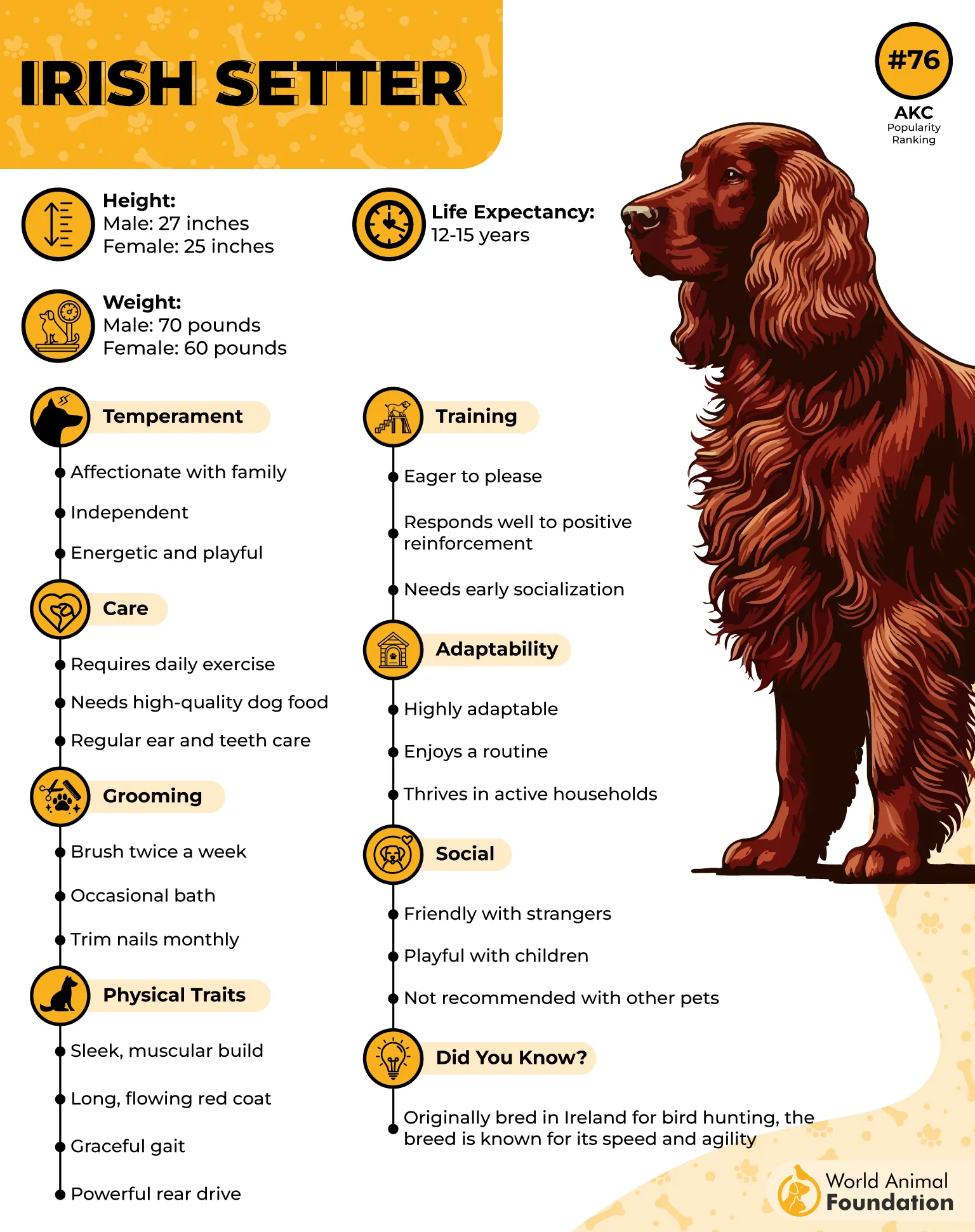
Ideal Owner
The ideal Irish Setter owner leads an active lifestyle and enjoys outdoor adventures. These dogs thrive with owners who can provide at least two substantial daily walks, playtime, and mental stimulation. Families with a spacious yard and a love for hiking or cycling are a great match.
Because they’re affectionate and sociable, Irish Setters do best in homes where someone is around often. Without enough attention or activity, they can become restless or distracted.
Fun Fact:
Irish Setters rarely bark without reason, making them poor guard dogs but ideal companions in quieter households.
4. Saluki
Among the world’s oldest dog breeds, the Saluki—also called the Persian Greyhound or Gazelle Hound—is a dignified, slim sighthound revered for its speed and silence. These graceful hunters trace their lineage to ancient Mesopotamia and Egypt, where they were companions of royalty and used to chase prey across deserts.
Males typically stand 23 to 28 inches tall and weigh between 40 and 65 pounds, while females are slightly smaller. Their coats can be smooth or feathered and appear in elegant hues like white, cream, fawn, golden, black and tan, and grizzle.
Salukis are part of the Hound Group and live between 10 to 17 years. Known for their independence, they rarely bark, a trait rooted in their hunting style that favors stealth over sound.
Ideal Owner
These hunting dogs flourish with owners who lead active lives and offer space for high-speed sprints. Their ideal match is someone with patience and experience, as Salukis can be aloof, sensitive, and require consistent, positive training. They do best in calm homes that provide regular physical and mental stimulation to prevent boredom-related behaviors.
Fun fact: Salukis can reach speeds of up to 42 mph, making them one of the fastest dog breeds in the world.
5. Akita
The Akita, also known as Akita Inu, is a noble and powerful breed hailing from the mountainous regions of northern Japan. Historically developed from the ancient Matagi dogs, Akitas served as hunters, protectors, and later as imperial guard dogs.
These heavy-boned, burly canines stand between 24 and 28 inches tall and weigh anywhere from 70 to 130 pounds. Their dense double coat appears in various colors, including pure white.
With a lifespan of 10 to 13 years, Akitas belong to the Working Group and are known for their quiet, dignified presence. Their broad head, erect ears, and curled tail give them a striking silhouette, while their reserved demeanor reinforces their role as strong, silent protectors.
Ideal Owner
Akitas are best suited for experienced dog owners who value independence and composure in a companion. They require firm, consistent training and early socialization to prevent aloof or overly protective behaviors.
Because they form strong attachments to a small circle of people, Akitas do best in single-dog households where they can bond deeply with their humans. Their quiet nature makes them ideal for those seeking a watchdog that only vocalizes when truly necessary.
Fun Fact: The legendary Akita named Hachikō became a national symbol of loyalty in Japan after waiting daily at a train station for his deceased owner for nine years.
6. Bernese Mountain Dog
Also known as the “Berner,” the Bernese Mountain Dog is a noble working breed that originated over 2,000 years ago in Switzerland, where it was used to pull carts, drive cattle, and guard farmsteads. Standing between 23 to 27.5 inches tall and weighing anywhere from 70 to 115 pounds, this majestic breed is both powerful and gentle.
Recognized by the American Kennel Club in 1937, Berners boast a distinctive tricolor coat of black, rust, and white, paired with soulful dark eyes and a broad chest.
Despite their size, they are affectionate family companions with a calm demeanor, and their thick double coat equips them well for colder climates. With a lifespan of 7 to 10 years, they are especially appreciated for their gentle nature and devotion to their loved ones.
Ideal Owner
These calm dogs are best suited for families who can meet their moderate energy levels with regular outdoor activity and provide ample space for them to move comfortably. Ideal owners are those who can invest time in early socialization and consistent training.
These dogs thrive in cool environments and do best with guardians who are home frequently, as they form deep emotional bonds and may become withdrawn if left alone for extended periods. Their mellow, generally quiet nature makes them well-mannered companions in peaceful households.
Fun Fact: Bernese Mountain Dogs are known for their acts of heroism—one named Nico famously rescued two people from a rip current in California.
7. Cavalier King Charles Spaniel
A noble companion with roots tracing back to British royalty, the Cavalier King Charles Spaniel is one of the most beloved toy breeds. Often called “Cavaliers,” these dainty dogs are adored for their sweet expression, luxurious coat, and regal charm.
Recognized by the American Kennel Club in 1995, they typically stand 12 to 13 inches tall and weigh between 13 and 18 pounds. With feathered ears, a silky coat in colors like Blenheim, ruby, tricolor, and black and tan, they radiate elegance. Despite their aristocratic lineage, Cavaliers are friendly, gentle, and incredibly affectionate. They belong to the Toy Group and enjoy a lifespan of 12 to 14 years.
Ideal Owner
The Cavalier is an ideal match for apartment dwellers, retirees, and families alike. Their mellow nature and tendency to stay quiet, unless feeling lonely or neglected, make them well-suited for close living quarters.
They thrive with owners who can provide regular companionship, light play, and cozy lap time. While training and socialization help curb occasional alert barking, these dogs generally aim to please and adapt well to most lifestyles.
Fun Fact: The Cavalier rarely startles at visitors—they’re more likely to greet guests with a wag and cuddle than with a bark.
8. French Bulldog
Recognizable by its trademark bat-like ears and endearing snub-nosed face, the French Bulldog—also known as the “Frenchie”—has become one of the world’s most beloved small companion breeds.
Originally bred as a lapdog for lace workers in 19th-century England and later refined in France, the Frenchie stands between 11 to 13 inches tall and typically weighs 19 to 28 pounds.
With a smooth, short coat available in colors like brindle, fawn, white, and combinations thereof, this compact pup falls under the AKC’s Non-Sporting Group and enjoys a life expectancy of 10 to 12 years.
Ideal Owner
French Bulldogs are tailor-made for city dwellers, apartment residents, and anyone seeking a low-maintenance yet affectionate pet. They bond deeply with their humans and require minimal exercise—short daily walks and some indoor playtime are sufficient.
Ideal owners are those who appreciate a laid-back lifestyle and are home frequently, as Frenchies do not like being left alone for long. Due to their flat-faced (brachycephalic) structure, they are prone to respiratory issues and overheating, so families should avoid overexertion or warm-weather workouts.
Responsible ownership includes selecting a pup from health-screened parents and maintaining regular skin care, especially around the folds.
Fun Fact: A study once revealed that 85% of French Bulldog owners reported their dogs bark very little.
9. Chinese Crested
With its distinct appearance and delicate frame, the Chinese Crested stands out in the dog world. This toy breed comes in two varieties: the hairless, known for its soft, exposed skin with tufts of hair on the head, tail, and feet; and the powderpuff, which sports a full, silky coat.
Standing between 11 and 13 inches tall and weighing around 8 to 12 pounds, this small dog breed is a light, fine-boned companion with cat-like agility and grace. Despite their unique looks, they are incredibly affectionate and loyal, often forming deep bonds with their families.
Classified under the Toy Group, they typically live 13 to 18 years. Their minimal barking and preference for lounging make them well-suited to quiet households and apartment life.
Ideal Owner
The ideal home for this affectionate dog breed is one that offers plenty of attention, companionship, and gentle handling. Their sensitive nature thrives in calm environments, making them excellent pets for older adults, singles, or families with respectful children.
Due to their small size and fragile build, interactions with young children should always be supervised. They also fare well in smaller living spaces, such as apartments, and enjoy indoor play and cuddling just as much as outdoor strolls.
Individuals who can meet their modest exercise needs and provide emotional presence throughout the day will find this breed a joyful, low-noise companion.
Fun Fact: The hairless variety is especially popular and sought-after, while the powderpuff version is considered rarer to find.
10. Papillon
Also known as the Continental Toy Spaniel, the Papillon is a regal yet spirited toy breed with a history dating back to 16th-century Europe. Once a favorite among aristocrats and frequently featured in Renaissance art, this petite pup stands 8 to 11 inches tall and weighs between 6 to 10 pounds.
True to its name—“papillon” means “butterfly” in French—its most recognizable feature is its upright, wing-shaped ears. These alert little dogs boast long, flowing coats in combinations of white with red, sable, black, or lemon markings, and they belong to the Toy Group. With a lifespan of 14 to 16 years, Papillons are surprisingly robust for their size and thrive in a range of environments.
Ideal Owner
Papillons are ideal for owners who want a small, low-vocal dog with high energy and an eagerness to please. They thrive in homes where they receive plenty of attention, mental stimulation, and physical activity.
Though intelligent and easily trained, Papillons prefer not to be left alone for long periods and do best with consistent companionship or interactive toys. First-time dog owners or apartment dwellers will appreciate their cheerful demeanor and minimal barking tendencies.
Fact: Despite being quiet, Papillons are champions in agility sports, often outperforming larger breeds thanks to their sharp minds and athletic agility.
Conclusion
For those seeking peace and calm in a canine companion, quiet dog breeds offer the perfect solution. These breeds are known for their composed temperaments and low tendency toward excessive barking, making them well-suited for apartment living, families with young children, or anyone craving a more tranquil home environment. While all dogs may vocalize occasionally, some are naturally more reserved, communicating through expression rather than noise.
In addition to the breeds we’ve covered, others like the Afghan Hound and African Lion Dogs (Rhodesian Ridgebacks) are also known for their quiet demeanor and dignified presence. The Basenji, often referred to as the “barkless dog,” communicates using unique yodel-like sounds instead of traditional barking.
These breeds exemplify that silence can be both elegant and companionable. Choosing a dog that aligns with your lifestyle not only reduces stress but also fosters a more harmonious household, especially when quiet loyalty speaks louder than barks ever could.


